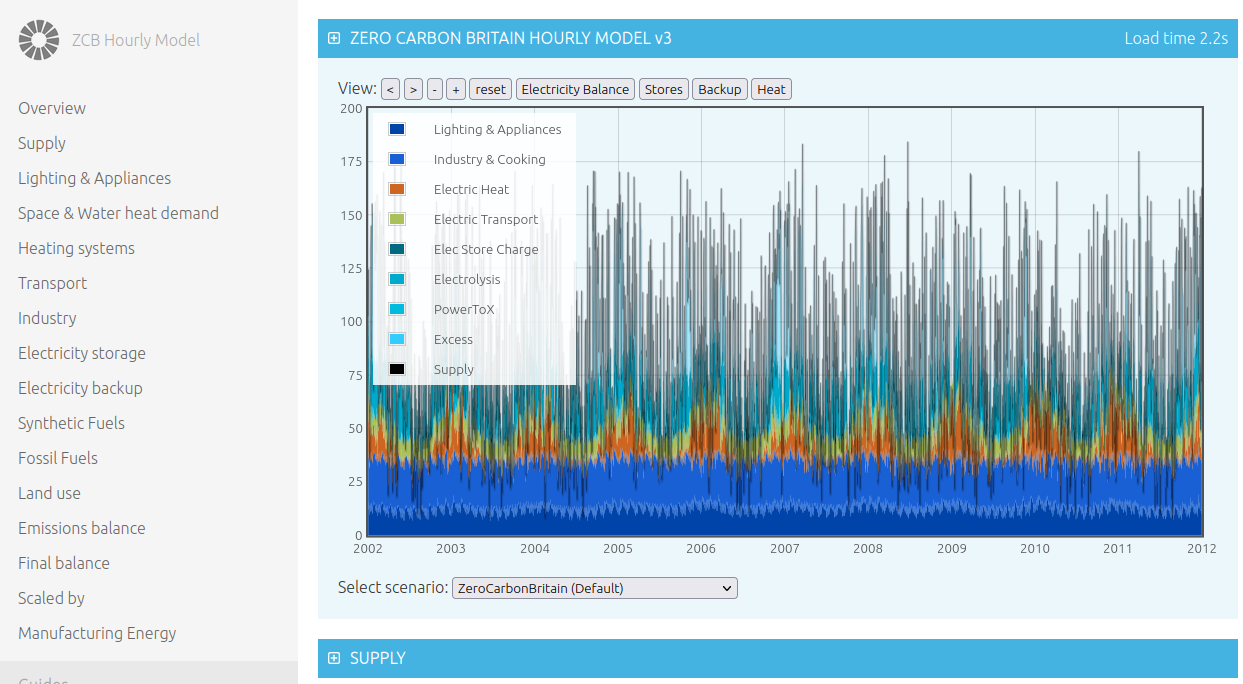Understanding the Zero Carbon Energy System
The decades ahead are set to be an incredibly important time as we switch our energy systems away from fossil fuels to a zero carbon energy supply. if we are to stay within an outside chance of not exceeding 2C warming we will see a revolution in our energy systems.
The last 13 years (2009-2022) saw global photovoltaic capacity grow 74x from 16 GW to over 1185GW (2022). The UK installed most of its current 13.8GW (2021) capacity of PV in this time. Global wind power capacity grew over 7.0 x from 121GW to 837GW (2021) (UK 28GW). The number of electric vehicles on the road globally has grown ~165x from 100,000 in 2011 to around 16.5 million at the end of 2021.
In order to try and understand the requirements and dynamics of zero carbon energy systems, we have worked with the team behind the ZeroCarbonBritain scenario to make an open source version of their model.

The ZeroCarbonBritain scenario shows how it is technically possible to achieve a zero carbon energy system in the UK through both new efficient buildings, existing buildings retrofit, electrification of transport, land use changes and powering up with renewable energy combined with storage and biomass backup technologies to balance supply with demand.
While the ZeroCarbonBritain scenario describes one path, the energy model behind it can be used to explore a much wider range of options. It’s perhaps useful to reflect that any exercise in building energy scenarios for the future is necessarily heavily influenced by values and world-views. It is possible to model a surprisingly wide range of possible futures.
There are of course a lot of different views on what mix of technologies should be used from heat pumps to hydrogen, nuclear, biomass, wind, solar, CCS, degree of building fabric improvement possible and on and on. Then there is as wide a range of views on what are often called behavioural change measures, will we reduce car use and cycle more? will we choose to fly-less or ultimately transition to electric and synthetic fuels?
The interaction between innovation, deployment and learning curves mean that the mix of technologies that are economically viable can change quite quickly. It’s difficult to predict the future 50-80 years ahead but it is still useful to model the dynamics of zero carbon energy systems, even if by the time we do reach zero carbon, this mix has changed again. Energy Modelling can identify pit-falls or areas of opportunity, the important thing is to keep updating our scenarios as new information comes in.
Explore the ZeroCarbonBritain energy model here:
Full ZeroCarbonBritain hourly energy modelling tool:
https://openenergymonitor.org/zcem
Open source repository for hourly model:
https://github.com/zerocarbonbritain/hourlymodel